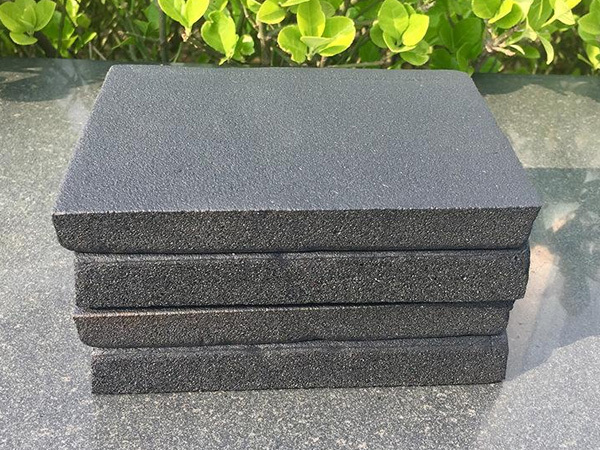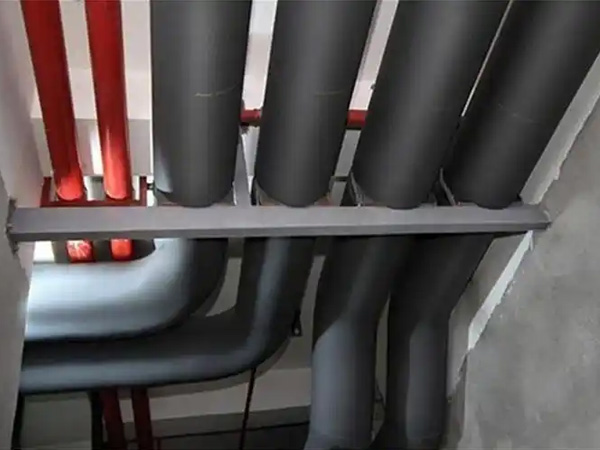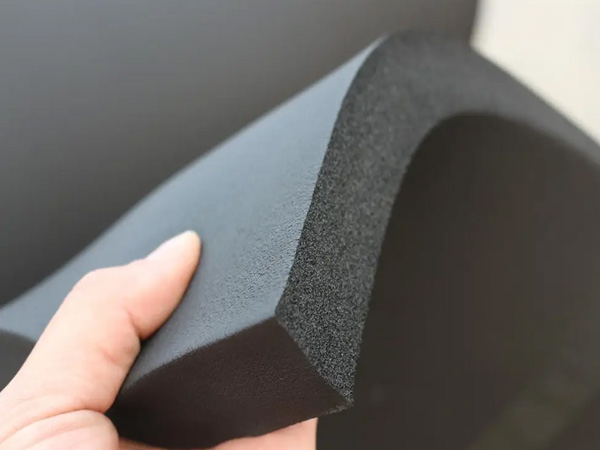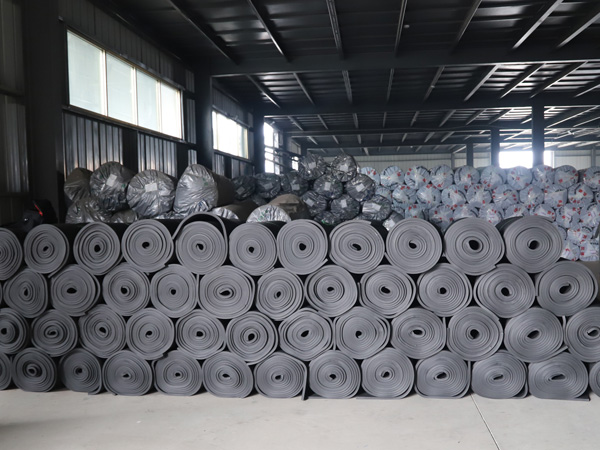Application of Elastomeric Foam in Industrial Pipeline Insulation
2025-06-18 15:34:00
Application of Elastomeric Foam in Industrial Pipeline Insulation
Elastomeric foam (rubber-plastic insulation boards) is widely used in industrial pipeline systems due to its excellent thermal efficiency, moisture resistance, and durability. Below is a detailed analysis of its key benefits and application methods in industrial settings.
1. Key Advantages for Industrial Piping
(1) Superior Thermal Performance
Low Thermal Conductivity (0.032–0.038 W/m·K) – Minimizes heat loss/gain in steam, chilled water, and process pipelines.
Wide Temperature Range (-40°C to 105°C) – Suitable for both cryogenic and high-temperature applications.
(2) Condensation Control
Closed-Cell Structure – Prevents moisture absorption (≤0.5% by volume), eliminating corrosion under insulation (CUI).
Self-Sealing Lap Joints – Ensures airtight insulation, critical for chilled water lines below dew point.
(3) Chemical & Mechanical Durability
Oil/Grease Resistance – Withstands hydrocarbon exposure in petrochemical plants.
Flexibility & Tear Resistance – Accommodates pipe expansion/contraction without cracking.
(4) Fire Safety Compliance
Class B1/EN 13501-1 Rated – Meets industrial fire protection standards.
Low Smoke Emission – Critical for confined spaces like offshore platforms.
2. Common Industrial Applications
(1) Steam & Hot Water Piping
Recommended Thickness: 25–50mm (depending on pipe temperature).
Installation Method: Adhesive-bonded sheets with aluminum foil facing for heat reflection.
(2) Chilled Water & Refrigeration Lines
Critical Feature: Vapor-tight joints to prevent condensation.
Preferred Product: Pre-formed tubes with self-adhesive longitudinal seams.
(3) Oil & Gas Pipelines
Special Requirements:
Acid-resistant formulations for sour gas service.
UV-stabilized coatings for outdoor exposed sections.
(4) Cryogenic Applications (LNG, Liquid Nitrogen)
Material Adaptation:
Ultra-low temperature grades (-200°C capable).
Reinforced with fiberglass scrim to prevent brittle fracture.
3. Installation Best Practices
(1) Surface Preparation
Clean pipes of rust, oil, and debris.
Apply primer on oxidized metal surfaces for better adhesion.
(2) Insulation Application
For Straight Pipes: Use pre-slit tubes for quick installation.
For Valves & Fittings: Cut custom shapes from sheets using templates.
Sealing Method:
Butyl tape for longitudinal seams.
Mastic sealant for complex geometries.
(3) Mechanical Protection
Aluminum or PVC jacketing for:
Physical damage prevention.
UV resistance in outdoor installations.
4. Maintenance & Inspection
Annual Checks For:
Damaged sections (tears, compression).
Moisture ingress via infrared thermography.
Repair Protocol:
Remove wet insulation immediately.
Patch with identical material using compatible adhesive.
5. Industry Standards Compliance
ASTM C534 – Standard specification for elastomeric pipe insulation.
ISO 23993 – Thermal insulation products for building equipment.
NACE SP0198 – Control of CUI in insulated systems.
For extreme environments (e.g., coastal plants), specify chloride-free formulations to prevent metal corrosion.

OurFlame Retardant Rubber Foamis a premium closed-cell elastomeric insulation material engi...

OurRubber Pipe Insulationis a high-performance solution designed specifically for HVAC pipi...

Rubber Foam Insulation Sheet – Product Introduction Premium Flexible Insulation for Therm...

Specially engineered for refrigeration applications, ourElastomeric Rubber Insulationprovid...



